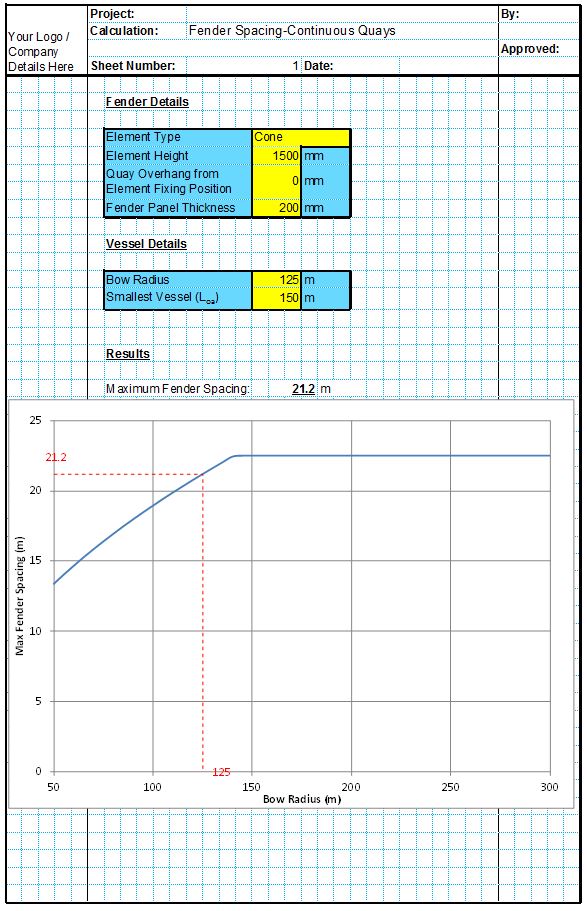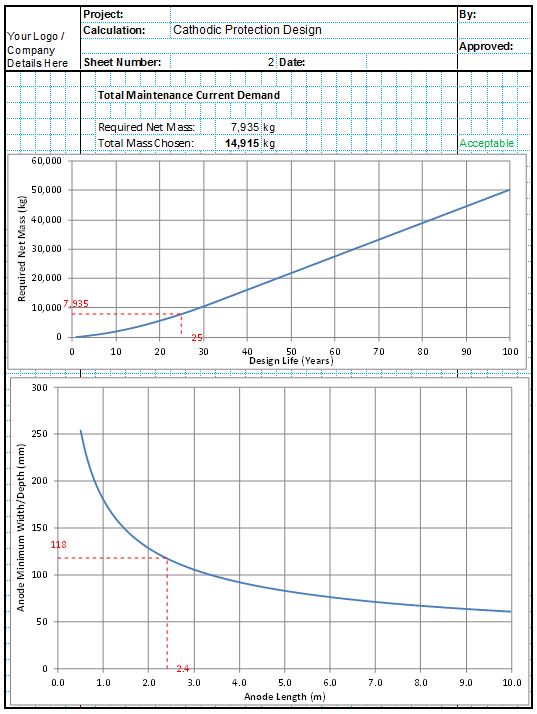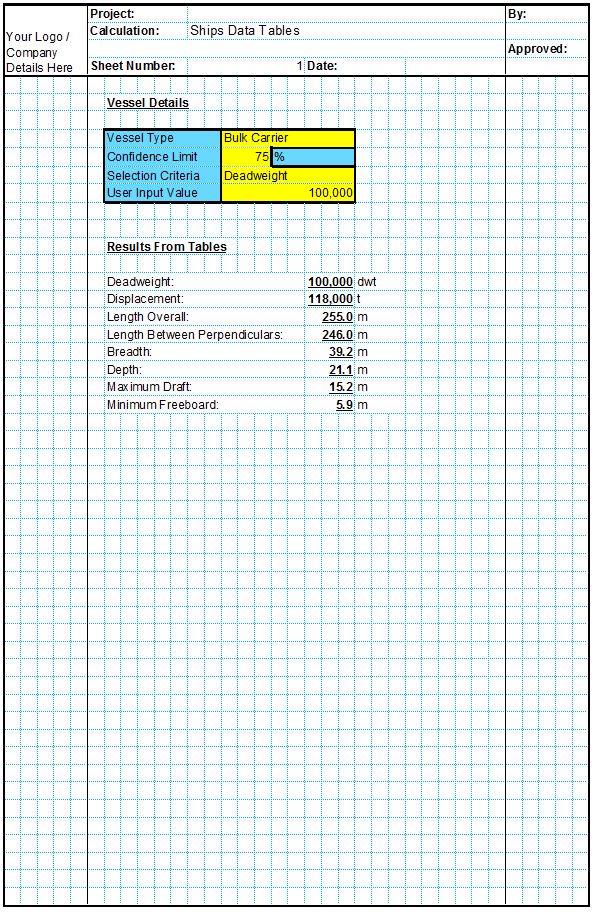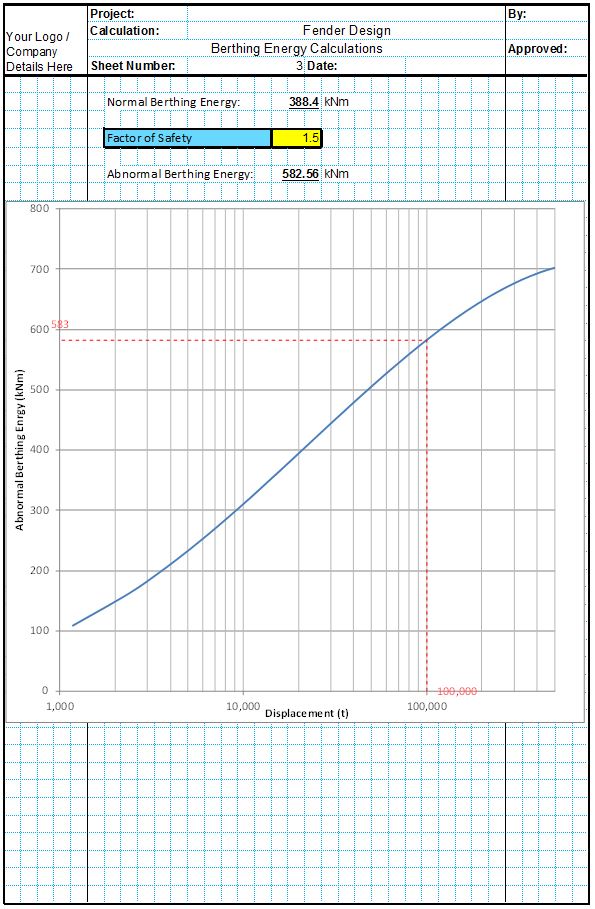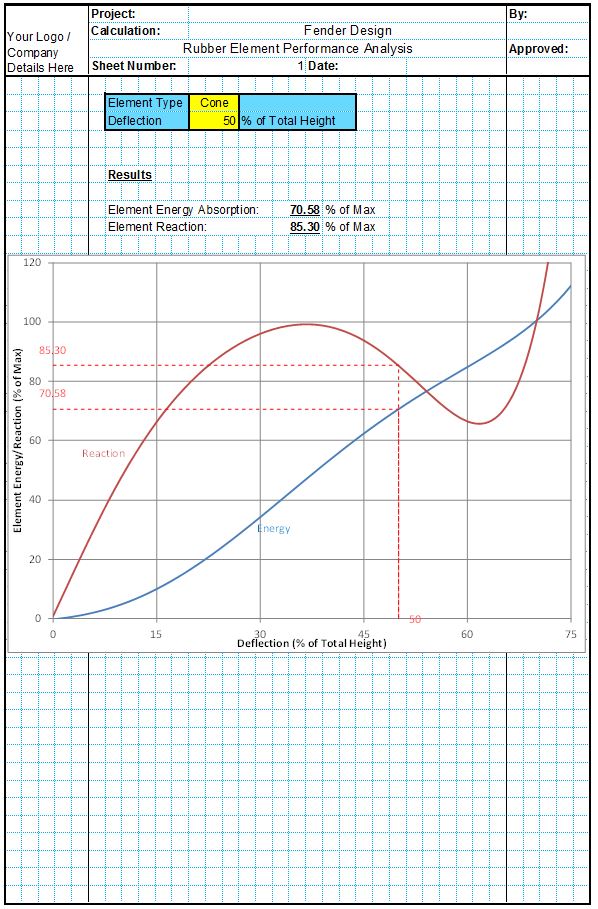This suite of spreadsheets allow the user to calculate the recommended maximum fender spacings on a continuous quay or on a RoRo or dolphin berthing structure. The suite also includes a spreadsheet which calculates the clearance between the quay edge and the vessel hull when the vessel has a bow flare.
The maximum fender spacing spreadsheets calculate the recomended maximum fender spacings in accordance with PIANC and British Standard guidelines for either continuous quays, RoRo berths or dolphin berths.
For a continuous berth, the user simply inputs details of the quay face and fenders and the minimum vessel bow radius and length. The vessel parameters can be estimated using the CivilWeb Ships Data spreadsheet. Then the spreadsheet calculates the maximum fender spacings which can be allowed before the smallest vessels can impact the quay structure during berthing. Then this is checked against the maximum fender spacing guidelines in PIANC and the British Standards to give a final recommendation. The unique design graph then shows the user the effects of different bow radii on the maximum fender spacings.
The RoRo and Dolphin berth spreadsheet simply takes the smallest vessel length and applies the PIANC and British Standards recommendations as there is no chance of the vessel impacting directly on the structure during berthing. The unique design graph then shows the user the effects of different vessel lengths which the user can then use to see the effects of different vessel sizes on the maximum recommended fender spacing.
The Fender Bow Flare Clearance spreadsheet takes user input values for clearance, quay height above fender elements and vessel bow flare angle to calculate the minimum fender clearance for this type of vessel. The unique design tool then shows the user the effects of different bow radii, which can be used by the designer to specify a maximum bow radius for this berth.
